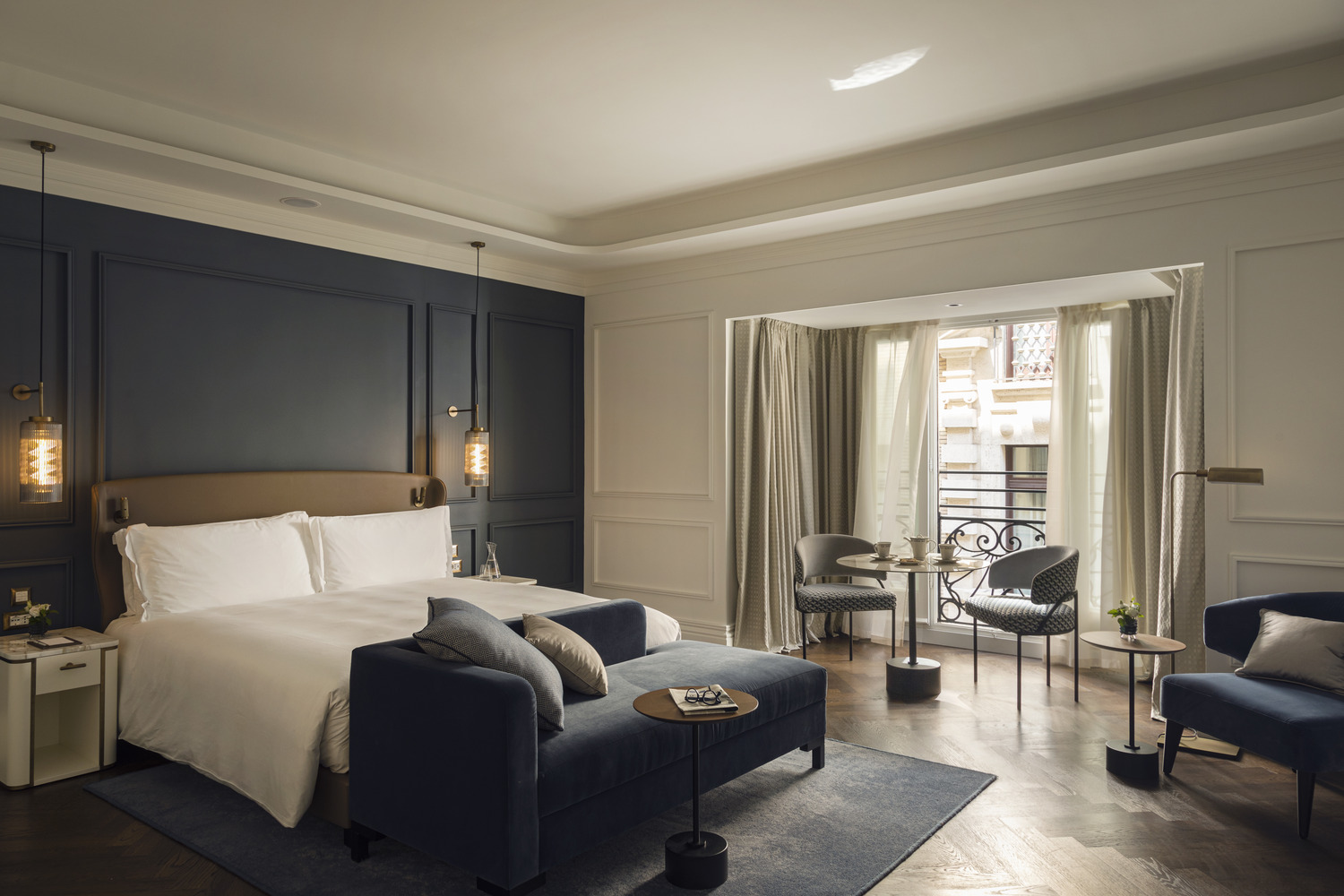Authenticity & Luxury Hotel Design
By James Lee
Managing Director/Design Principal, Americas & APAC
The current emphasis on authenticity, often associated with Gen Z, has resonated across the public sector, creating a pervasive demand for authenticity in innumerable markets. The luxury travel industry is no exception.
Long associated with the traveler’s intent to engage firsthand with other cultures while enjoying an elevated level of comfort and convenience, the demand for authenticity in luxury hotel design is stronger than ever. Inspired in myriad ways by the history and culture of location, the luxury hotel must create a sense of place and immersive experience that connects travelers with the heartbeat and ambience of their surroundings.
Hotels that offer luxury and an authenticity that reflects place blend local culture, classic design elements, bespoke conveniences, and contemporary elements in a timeless narrative. To that end, the designer's first step is a deep dive into the venue's history, traditions, and surrounding community. Research grounds the design, ensuring resonance with guests and the venue’s setting.
Seven key points are central to authentic luxury hotel designs:
Timeless Design with a Story: True timelessness is not about resisting change—it is about resonating across time. Overt or implied, the design always tells a story. Referencing the property’s cultural heritage, that story comes through in architectural elements, lighting, furniture, accessories, and a variety of details that speak to place. A timeless design does not shout. It listens. It draws from the past with reverence, lives fully in the present, and leaves room for the future to arrive gracefully. It carries with it a story—not of trends or fashions, but of essence, memory, and intention.
Craftsmanship and Quality: The integration of authentic materials and custom-made design components of exceptional craftsmanship and quality produced by local artisans will elevate the design and sense of place. Handwoven textiles, made-to-order furniture, and artifacts representative of the surroundings, as well as locally/regionally sourced materials including wood, stone, and plant life, can be layered throughout. The result is a timeless, sophisticated design, ensuring a bespoke guest experience that is intentional and representative of location.
Sensory Experience: Luxury design experiences engage all the senses. Thoughtful lighting, pleasing aromas and sounds associated with the venue’s location, textures that invite touch, and custom fabrics in motifs and colors indigenous to the area will enhance the ambiance, making it deeply authentic and immersive. A balance of luxury aesthetics, modern amenities, local influences, and creativity is key to delighting the senses. Consider a resort in a region with a history of distinctive architectural elements (perhaps ornate wood carvings or stonework). Reinterpreting and elevating those elements for a contemporary sensibility might mean recasting well-established patterns and forms with a minimalist aesthetic that uses local or leading-edge materials, keeping the design fresh and relevant but rooted in cultural context.
Attention to Detail: Little things matter. The design of menus and room keys, the feel of luxury linens, the detailing of bespoke fixtures, and even the flow from one area to another contribute to a meaningful guest experience.

Meticulous details, including the design of brass handles in guest rooms reminiscent of fluted Roman columns, combined with bespoke furnishings by local artisans, distinguish IA’s renovation of the InterContinental Rome Ambasciatori Palace.
Personalization: The luxury hotel experience is about catering to guests’ expectations. Expertly designed rooms with state-of-the-art technology, customized services, amenities, and conveniences, as well as design elements that surprise and delight, make visitors feel the venue is intended just for them. With these elements aligned, the luxury experience ensconced in the ambiance and culture of its surroundings genuinely connects traveler and destination for a memorable and meaningful encounter.

Connection to Nature: Whether an abundance of natural light, the integration of local plant life, or an easy transition from indoor to outdoor spaces, an emphasis on nature and biophilic design will strengthen the bond between venue and surroundings for a more grounded, authentic experience.
Sustainability: Tied to the concept of authenticity, sustainability is a significant factor for luxury hotels. Respectful of the local surroundings and mindful of ecological impact, their design includes a focus on environmental stewardship and support for the circular economy. The use of local and repurposed materials, as well as collaborations with regional artisans to create eco-conscious artifacts or products for use at the hotel, enhances the sense of authenticity.

By prioritizing sustainability and incorporating environmentally conscious practices, as well as preserving a connection to nature and place, the Ambasciatori Palace renovation sets an example for responsible design and construction in the hospitality industry and at its historic location.
Conclusion
From the moment of arrival, the guest experience should align with luxury and the region’s ambience. A welcoming lobby with local plant life or floral arrangements, as well as ambient lighting suggesting the mood of the surrounding environment, sets the stage for the guest’s visit. Every space and detail from check-in to private room must be carefully designed to create a sense of discovery amidst sophisticated and refined luxury elements. Blending the experience of anticipated comfort with the authenticity of a historic location on Rome's Via Veneto is where the magic begins.

All Photography by Mattia Aquila
James Lee
Managing Director/Design Principal, Americas & APAC
Contact James: James.Lee@interiorarchitects.com

